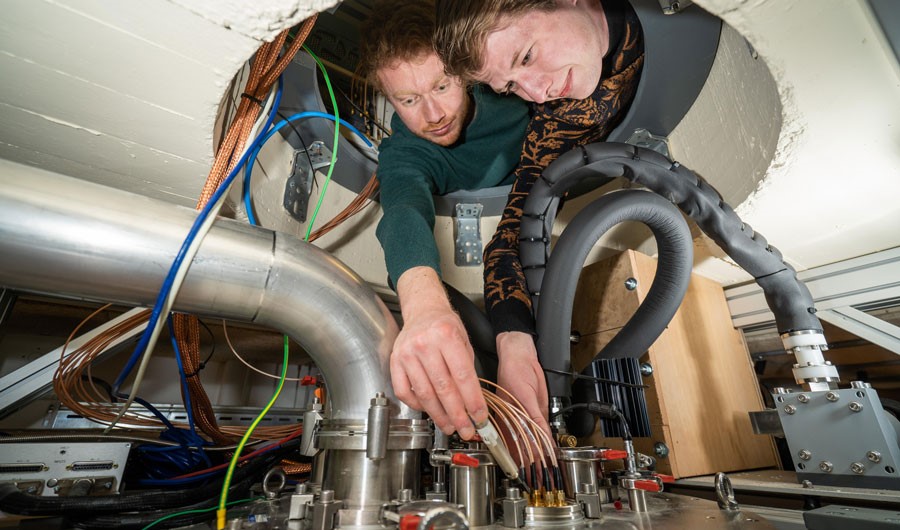Quantum Computers are Hotter Than Ever -- Literally

Researchers on Menno Veldhorst's team at QuTech, a quantum technology research center founded by Delft University of Technology and the Netherlands Organisation for Applied Scientific Research. The group is one of the two that have developed quantum computing devices that can tolerate higher temperatures.
Wouterslitsfotografie for QuTech
(Inside Science) -- Two separate groups of researchers, one from University of New South Wales in Australia and one from Delft University of Technology in the Netherlands, have independently developed similar quantum computing devices that can operate above 1 on the Kelvin temperature scale, up from the previous 0.1 K range. The feat clears a major hurdle that has prevented current quantum computers from being scaled up into more powerful machines.
Rather than performing calculations based on binary bits that are either 1 or 0, quantum computers use quantum bits, known as “qubits,” that can be both 1 and 0 at the same time. This specific property of qubits allows quantum computers to perform certain tasks, such as encryption-related ones, orders of magnitudes more efficiently than classical computers.
Just as classical bits can be stored in many different physical forms, ranging from floppy disks in the ’80s to the solid-state drives of today, quantum bits can also be realized in many different ways. One of the most popular ways to create qubits involves superconducting circuits, such as those used in both IBM’s and Google’s quantum computers.
However, these superconducting circuits generally require an extremely cold environment to operate, usually in the 0.1 K range. This sensitivity to temperature is a major practical concern for quantum computers. It makes them expensive to run due to the constant cooling requirement, and it also limits the number of qubits a system can have, because each additional qubit introduces heat into the system.
The quantum processors developed by the Dutch and Australian groups both use superconducting electrons as their qubits, and they can operate at 1.1 and 1.5 K respectively, more than 10 times warmer than current superconducting quantum computers. The robustness of the qubits at such high temperatures may allow them to be closer together, instead of being housed in separate components.
“The current status of quantum technology is comparable to that of classical technology in the 1950s. At that time, every component had to be soldered together, which became impracticable for ever-larger electrical circuits,” said Menno Veldhorst, one of the authors from the Delft group, in a press release.
The ability to process multiple qubits on a single chip can be compared to the technological leap when classical computers went from individual vacuum tubes to silicon chips. In addition, both devices developed by the independent groups are silicon-based, demonstrating the possibility of integrating quantum circuitries onto classical computer chips.

